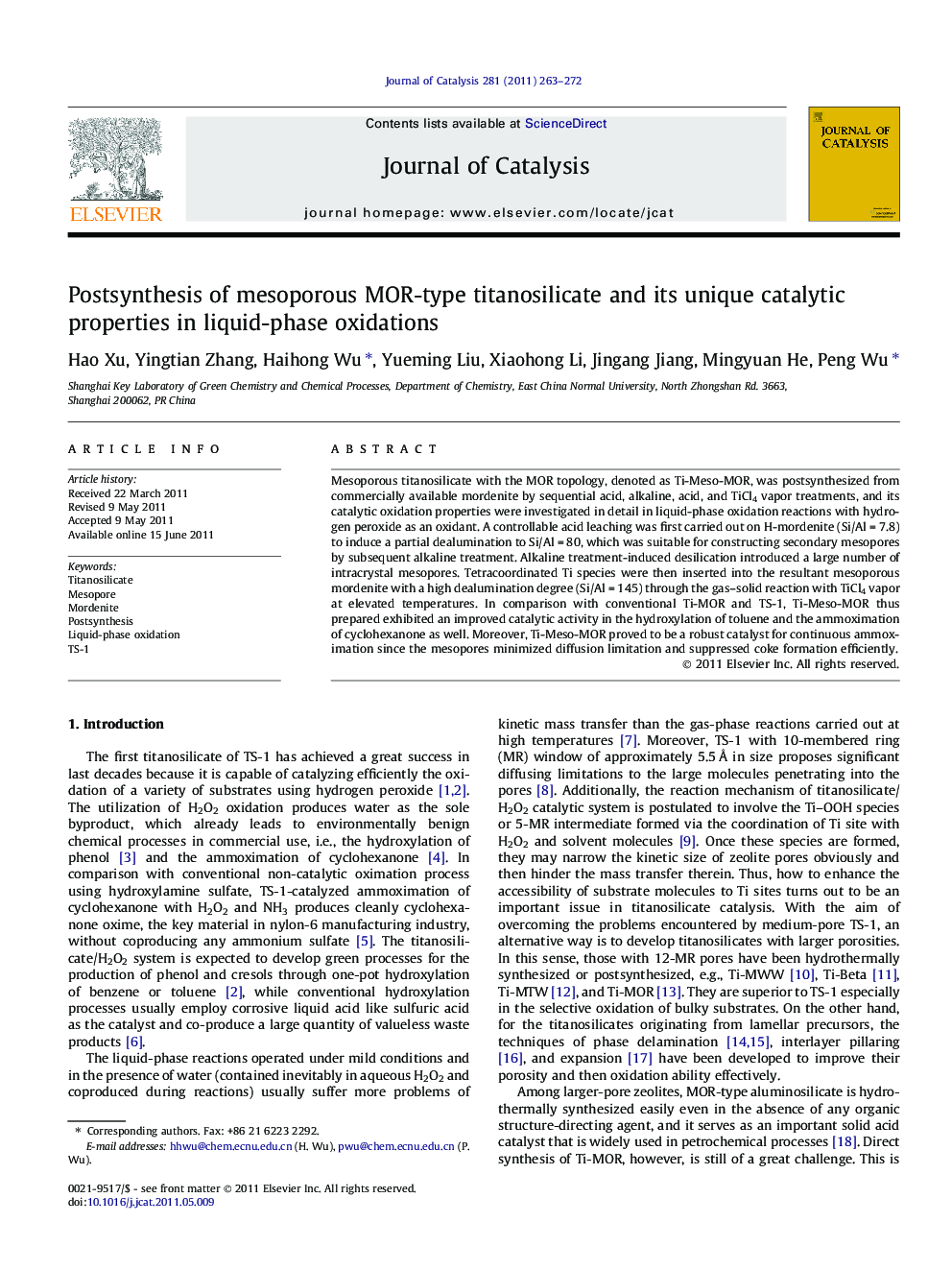| کد مقاله | کد نشریه | سال انتشار | مقاله انگلیسی | نسخه تمام متن |
|---|---|---|---|---|
| 61676 | 47598 | 2011 | 10 صفحه PDF | دانلود رایگان |

Mesoporous titanosilicate with the MOR topology, denoted as Ti-Meso-MOR, was postsynthesized from commercially available mordenite by sequential acid, alkaline, acid, and TiCl4 vapor treatments, and its catalytic oxidation properties were investigated in detail in liquid-phase oxidation reactions with hydrogen peroxide as an oxidant. A controllable acid leaching was first carried out on H-mordenite (Si/Al = 7.8) to induce a partial dealumination to Si/Al = 80, which was suitable for constructing secondary mesopores by subsequent alkaline treatment. Alkaline treatment-induced desilication introduced a large number of intracrystal mesopores. Tetracoordinated Ti species were then inserted into the resultant mesoporous mordenite with a high dealumination degree (Si/Al = 145) through the gas–solid reaction with TiCl4 vapor at elevated temperatures. In comparison with conventional Ti-MOR and TS-1, Ti-Meso-MOR thus prepared exhibited an improved catalytic activity in the hydroxylation of toluene and the ammoximation of cyclohexanone as well. Moreover, Ti-Meso-MOR proved to be a robust catalyst for continuous ammoximation since the mesopores minimized diffusion limitation and suppressed coke formation efficiently.
Mesoporous titanosilicate with the MOR topology, postsynthesized by sequential dealumination, desilication, and TiCl4 vapor treatment, are highly active for the liquid-phase ammoximation of cyclohexanone and hydroxylation of toluene with hydrogen peroxide as oxidant.Figure optionsDownload high-quality image (139 K)Download as PowerPoint slideHighlights
► MOR-type aluminosilicate was converted into mesoporous zeolite by post-desilication.
► Tetrahedral Ti species were incorporated into the Al-deficient sites by secondary synthesis, leading to mesoporous titanosilicate, Ti-Meso-MOR.
► Possessing an improved accessibility to Ti active sites, Ti-Meso-MOR is highly active for the liquid-phase oxidations with hydrogen peroxide.
Journal: Journal of Catalysis - Volume 281, Issue 2, 25 July 2011, Pages 263–272